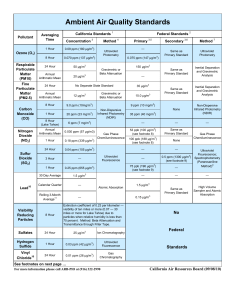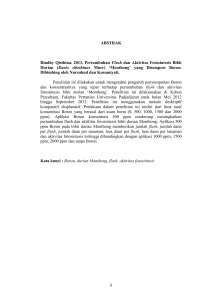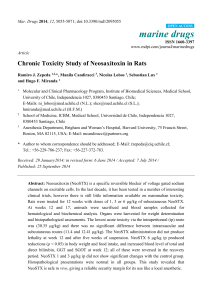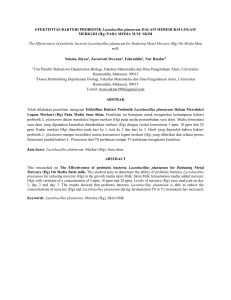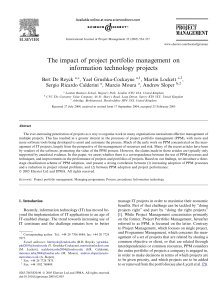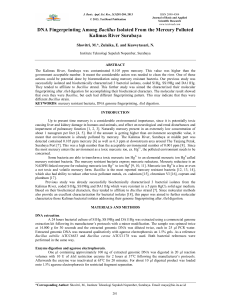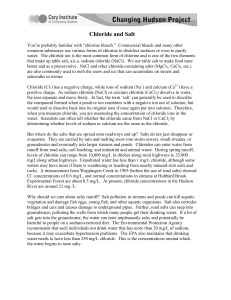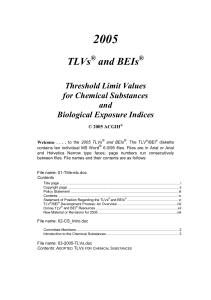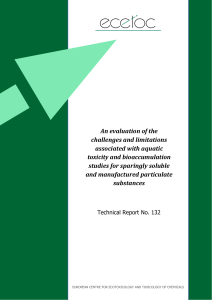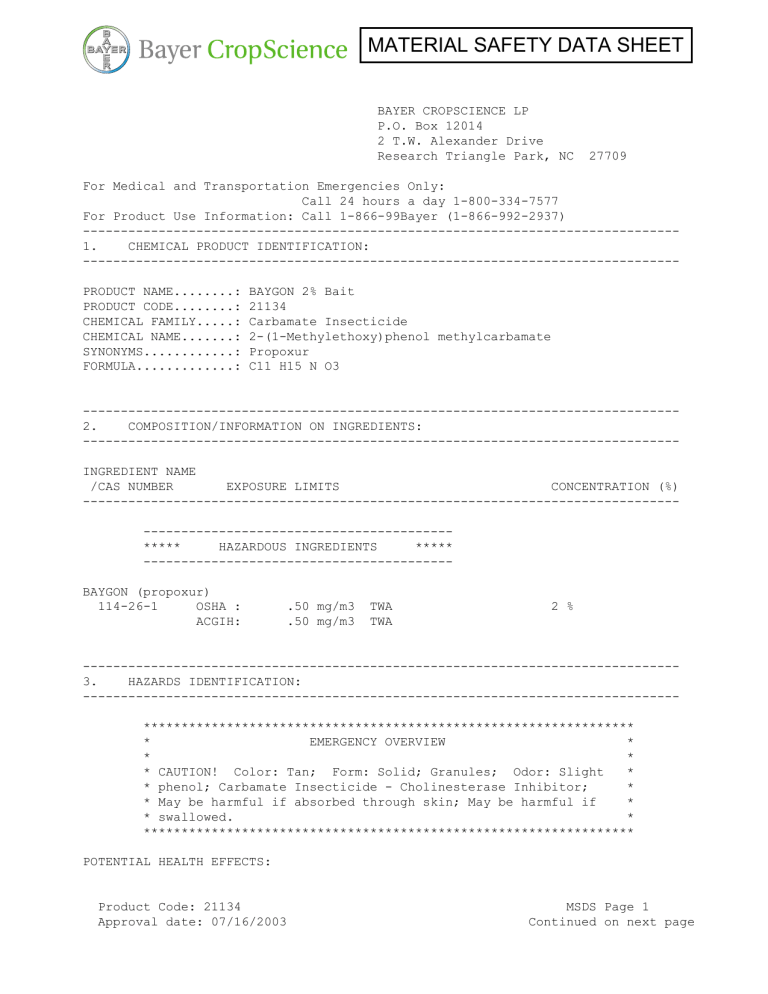
MATERIAL SAFETY DATA SHEET BAYER CROPSCIENCE LP P.O. Box 12014 2 T.W. Alexander Drive Research Triangle Park, NC 27709 For Medical and Transportation Emergencies Only: Call 24 hours a day 1-800-334-7577 For Product Use Information: Call 1-866-99Bayer (1-866-992-2937) ------------------------------------------------------------------------------1. CHEMICAL PRODUCT IDENTIFICATION: ------------------------------------------------------------------------------PRODUCT NAME........: PRODUCT CODE........: CHEMICAL FAMILY.....: CHEMICAL NAME.......: SYNONYMS............: FORMULA.............: BAYGON 2% Bait 21134 Carbamate Insecticide 2-(1-Methylethoxy)phenol methylcarbamate Propoxur C11 H15 N O3 ------------------------------------------------------------------------------2. COMPOSITION/INFORMATION ON INGREDIENTS: ------------------------------------------------------------------------------INGREDIENT NAME /CAS NUMBER EXPOSURE LIMITS CONCENTRATION (%) ----------------------------------------------------------------------------------------------------------------------***** HAZARDOUS INGREDIENTS ***** ----------------------------------------BAYGON (propoxur) 114-26-1 OSHA : ACGIH: .50 mg/m3 .50 mg/m3 TWA TWA 2 % ------------------------------------------------------------------------------3. HAZARDS IDENTIFICATION: ------------------------------------------------------------------------------***************************************************************** * EMERGENCY OVERVIEW * * * * CAUTION! Color: Tan; Form: Solid; Granules; Odor: Slight * * phenol; Carbamate Insecticide - Cholinesterase Inhibitor; * * May be harmful if absorbed through skin; May be harmful if * * swallowed. * ***************************************************************** POTENTIAL HEALTH EFFECTS: Product Code: 21134 Approval date: 07/16/2003 MSDS Page 1 Continued on next page 3. HAZARDS IDENTIFICATION (Continued) --------------------------------------ROUTE(S) OF ENTRY..................: Inhalation; Skin Contact; Skin Absorption HUMAN EFFECTS AND SYMPTOMS OF OVEREXPOSURE: ACUTE EFFECTS OF EXPOSURE.....: Inhalation, dermal absorption or ingestion of this material may result in systemic intoxication due to inhibition of the enzyme cholinesterase. The sequence of development of systemic effects varies with the route of entry, and the onset of symptoms may be delayed an hour or more. First symptoms of poisoning may be nausea, increased salivation, lacrimation, blurred vision and constricted pupils. Other symptoms of systemic poisoning include vomiting, diarrhea, abdominal cramping, dizziness and sweating. After inhalation, respiratory symptoms like tightness of chest, wheezing, and laryngeal spasms, may be pronounced at first. If the poisoning is severe, then symptoms of convulsions, low blood pressure, cardiac irregularities, loss of reflexes and coma may occur. In extreme cases, death may occur due to a combination of factors such as respiratory arrest, paralysis of respiratory muscles or intense bronchoconstrictions. Complete symptomatic recovery from sublethal poisoning usually occurs within 24 hours once the source of exposure is completely removed. Animal studies have shown that this product is mildly toxic by the oral and dermal routes. It can cause mild irritation to the conjunctiva with all irritation resolving within 7 days. CHRONIC EFFECTS OF EXPOSURE...: Repeated exposure to small amounts of this material may result in unexpected cholinesterase depression causing symptoms such as malaise, weakness, and anorexia that resemble other illnesses such as influenza. Exposure to the concentration that would not have produced symptoms in a person that was not previously exposed may produce severe symptoms of cholinesterase inhibition in a previously exposed person. High doses of propoxur induced bladder cancers when fed to rats in one study. Cancer was not induced in several other feeding studies on rats and other mammals. The implications of these studies for humans are not known. CARCINOGENICITY...............: This product is not listed by NTP, IARC or regulated as a carcinogen by OSHA. MEDICAL CONDITIONS AGGRAVATED BY EXPOSURE......: No specific medical conditions are known which may be aggravated by exposure to the active ingredient in this product; however, any disease, medication or prior exposure which reduces normal cholinesterase activity may increase susceptibility to the toxic effects of the active ingredient. ------------------------------------------------------------------------------4. FIRST AID MEASURES: ------------------------------------------------------------------------------FIRST AID FOR EYES......: Hold eye open and rinse slowly and gently with water for 15-20 minutes. Remove contact lenses, if present, after the first 5 minutes, then continue rinsing eye. Call a poison control center or doctor Product Code: 21134 Approval date: 07/16/2003 MSDS Page 2 Continued on next page 4. FIRST AID MEASURES (Continued) ----------------------------------for treatment advice. FIRST AID FOR SKIN......: Take off contaminated clothing. Rinse skin immediately with plenty of water for 15-20 minutes. Call a poison control center or doctor for treatment advice. FIRST AID FOR INHALATION: Move person to fresh air. If person is not breathing, call 911 or an ambulance, then give artificial respiration, preferably by mouth-to-mouth, if possible. Call a poison control center or doctor for further treatment information. FIRST AID FOR INGESTION.: Call poison control center or doctor immediately for treatment advice. Have person sip a glass of water if able to swallow. Do not induce vomiting unless told to do so by physician or poison control center. Do not give anything by mouth to an unconscious person. NOTE TO PHYSICIAN.......: This product contains the carbamate insecticide, propoxur, a cholinesterase inhibitor. Cholinesterase inhibition results in stimulation of the central nervous system, the parasympathetic nervous system and the somatic motor nerves. If symptoms of carbamate poisoning are present, the administration of atropine sulfate is indicated. Administer atropine sulfate in large, therapeutic doses. In mild cases, start treatment by giving 1-2 mg of atropine intravenously every 15 minutes until signs of atropinization appear (dry mouth, flushing and dilated pupils if pupils were originally pinpoint). In severe cases, start treatment by giving 2-4 mg intravenously every 5-10 minutes until fully atropinized. Dosages for children should be appropriately reduced. Do not use oximes such as 2-PAM unless organophosphate intoxication is also suspected. Do not give morphine. Watch for pulmonary edema which may develop in serious cases of poisoning even after 24 hours. At first sign of pulmonary edema, place patient in oxygen tent and treat symptomatically. ------------------------------------------------------------------------------5. FIRE FIGHTING MEASURES: ------------------------------------------------------------------------------FLASH POINT.....................: Not Applicable FLAMMABLE LIMITS: UPPER EXPLOSIVE LIMIT (UEL)(%): Not applicable LOWER EXPLOSIVE LIMIT (LEL)(%): Not applicable EXTINGUISHING MEDIA.............: Water; Dry Chemical SPECIAL FIRE FIGHTING PROCEDURES: Keep out of smoke, cool exposed containers with water spray. Fight fire from upwind position. Use self-contained breathing equipment. Contain runoff to prevent entry into sewers or waterways. Equipment or materials involved in pesticide fires may become contaminated. ------------------------------------------------------------------------------6. ACCIDENTAL RELEASE MEASURES: ------------------------------------------------------------------------------SPILL OR LEAK PROCEDURES..........: Isolate area and keep unauthorized people away. Do not walk through spilled material. Avoid breathing dusts and Product Code: 21134 Approval date: 07/16/2003 MSDS Page 3 Continued on next page 6. ACCIDENTAL RELEASE MEASURES (Continued) -------------------------------------------skin contact. Wear proper protective equipment. Carefully sweep up spilled material. Place in covered container for reuse or disposal. Scrub contaminated area with detergent and bleach solution. Repeat. Rinse with water. Contaminated soil may have to be removed and disposed. Do not allow material to enter streams, sewers, or other waterways or contact vegetation. ------------------------------------------------------------------------------7. HANDLING AND STORAGE: ------------------------------------------------------------------------------STORAGE TEMPERATURE(MIN/MAX): None/30-day average not to exceed 100 F SHELF LIFE..................: Time/temperature dependent. Contact Bayer for details. SPECIAL SENSITIVITY.........: Heat, moisture HANDLING/STORAGE PRECAUTIONS: Store in a cool dry area designated specifically for pesticides. Do not store near any material intended for use or consumption by humans or animals. ------------------------------------------------------------------------------8. PERSONAL PROTECTION: ------------------------------------------------------------------------------EYE PROTECTION REQUIREMENTS........: Goggles should be used when needed to prevent dust from getting into eyes. SKIN PROTECTION REQUIREMENTS.......: Avoid skin contact. Wear long sleeves and trousers. Wear chemical-resistant gloves, boots or shoe covers when needed to prevent dermal exposure. VENTILATION REQUIREMENTS...........: Maintain exposure levels below the exposure limit through the use of general and local exhaust ventilation. RESPIRATOR REQUIREMENTS............: If necessary under the conditions of use, wear a NIOSH-approved particulate respirator. ADDITIONAL PROTECTIVE MEASURES.....: Clean water should be available for washing in case of eye or skin contamination. Educate and train employees in safe use of the product. Follow all label instructions. Launder clothing separately after use. Wash thoroughly after handling. ------------------------------------------------------------------------------9. PHYSICAL AND CHEMICAL PROPERTIES: ------------------------------------------------------------------------------PHYSICAL FORM.............: COLOR.....................: ODOR......................: MOLECULAR WEIGHT..........: BOILING POINT.............: MELTING/FREEZING POINT....: SOLUBILITY IN WATER ......: Product Code: 21134 Approval date: 07/16/2003 Solid; Granules Tan Slight phenol 209.2 (for propoxur) Not applicable Not applicable 0.18% (for propoxur) MSDS Page 4 Continued on next page 9. PHYSICAL AND CHEMICAL PROPERTIES (Continued) ------------------------------------------------SPECIFIC GRAVITY .........: Not established BULK DENSITY..............: Approx. 30 lb./cu ft % VOLATILE BY VOLUME......: Not applicable VAPOR PRESSURE ...........: 9.7 x 10-6 mm Hg @ 20 C (for propoxur) VAPOR DENSITY ............: Not applicable (Air = 1) ------------------------------------------------------------------------------10. STABILITY AND REACTIVITY: ------------------------------------------------------------------------------STABILITY..................: HAZARDOUS POLYMERIZATION...: INCOMPATIBILITIES..........: INSTABILITY CONDITIONS.....: DECOMPOSITION PRODUCTS.....: CH3NH2 This is a stable material. Will not occur. Alkaline materials, strong oxidants Sustained temperatures above 100 F Proposed compounds include: CO, CO2, CH3NCO, ------------------------------------------------------------------------------11. TOXICOLOGICAL INFORMATION: ------------------------------------------------------------------------------Only acute studies have been performed on this product as formulated. non-acute information pertains to the active ingredient, propoxur. The ACUTE TOXICITY ORAL LD50..........: Male Rat: >2012 mg/kg (feeding study); Female Rat: >1795 mg/kg (feeding study) DERMAL LD50........: Rabbit: >2000 mg/kg INHALATION LC50....: 4-hr exposure to dust: Rat: >0.850 mg/l (analytical) -- 1-hr exposure to dust (extrapolated from 4-hr LC50): Rat: >3.4 mg/l (analytical) EYE EFFECTS........: Rabbit: Mild irritation to the conjunctiva was observed with all irritation resolving within 7 days. SKIN EFFECTS.......: Rabbit: Not a dermal irritant. SENSITIZATION......: Guinea pig: Not a dermal sensitizer. SUBCHRONIC TOXICITY...: In a 3 month dermal toxicity study, rabbits were treated with propoxur at levels up to and including the limit dose (1000 mg/kg) for 6 hours/day, 5 days/week. There were no local or systemic effects observed at any of the levels tested. The no-observed-effect-level (NOEL) was 1000 mg/kg. In a 13 week oral gavage study using Rhesus monkeys, a dose of 40 mg/kg/day resulted in cholinergic symptoms lasting 5-15 minutes after administration. These symptoms included salivation, chewing, twitching and rapid respiration. A 50% depression in plasma cholinesterase occurred by 1 hour. This returned to normal by 24 hours after administration. In an inhalation study, in which rats were exposed to propoxur at aerosol concentrations of 15.3, 45.3 or 139.6 mg/cubic meter for 6 hours/day, 5 days/week for a period of either 4 or 8 weeks, cholinesterase inhibition occurred. In a subchronic study in dogs, propoxur was administered at dietary concentrations of 60, 600 or 1800 ppm. Effects observed included decreased Product Code: 21134 Approval date: 07/16/2003 MSDS Page 5 Continued on next page 11. TOXICOLOGICAL INFORMATION (Continued) ------------------------------------------food consumption and terminal body weights, and changes in clinical chemistries and organ weights. The NOEL was 60 ppm. CHRONIC TOXICITY......: In a 1 year study, dogs were administered propoxur at dietary concentrations of 200, 600 or 1800 ppm. The high dose was increased to 3600 ppm during the 41st week and subsequently to 5400 ppm from the 45th week until the end of the study. Effects at the high dose included reduced body weight gain, cholinesterase inhibition, elevated plasma cholesterol levels, increased liver weights and thymus atrophy. An additional study was conducted in which the NOEL was determined to be 70 ppm on the basis of plasma cholesterol. In a 2 year study, propoxur was administered to rats at dietary concentrations of 200, 1000 or 5000 ppm. Treatment with 5000 ppm resulted in decreased food consumption, decreased body weight gain, cholinesterase inhibition, neuropathy and muscular atrophy. The NOEL was 200 ppm. Rats were exposed to propoxur at liquid aerosol concentrations of 2.2, 10.4 or 50.5 mg/m3 for 6.3 hours/day, 5 days/week for 2 years. Cholinesterase inhibition occurred at concentrations of 10.4 mg/m3 and above. The NOEL was determined to be 2.2 mg/m3. CARCINOGENICITY.......: Propoxur was investigated for carcinogenic effects in a 2 year feeding study on mice. Dietary concentrations of 500, 2000 or 8000 ppm were employed in the study. An increased incidence of benign liver adenomas occurred in male mice at 2000 ppm and greater. When rats were fed propoxur for 2 years in a single type of diet, urinary bladder neoplasias were observed at concentrations of 1000 ppm and above. Propoxur was not carcinogenic in other types of diets administered to rats at high doses up to and including the maximum tested concentration of 8000 ppm. In a 2 year inhalation study on rats, propoxur was determined to be nononcogenic at liquid aerosol concentrations up to and including the maximum tested concentration of 50.5 mg/m3. MUTAGENICITY..........: A large mutagenicity database supports the conclusion that propoxur is not genotoxic. This database includes s special study to evaluate genotoxic potential using urinary bladder cells from propoxur-treated rats. This study clearly demonstrated that propoxur and its metabolites are nongenotoxic to urinary bladder cells. DEVELOPMENTAL TOXICITY: In a developmental toxicity study using rats, propoxur was administered during gestation by oral gavage at doses of 3, 9 or 27 mg/kg. The NOEL for maternal toxicity was 3 mg/kg. No developmental effects were observed at any of the levels tested. In a developmental toxicity study using rabbits, propoxur was administered during gestation at oral doses of 3, 10 or 30 mg/kg. Developmental toxicity occurred at the maternally toxic level of 30 mg/kg. The NOEL for maternal and developmental toxicity was 10 mg/kg. REPRODUCTION..........: In reproduction studies using rats, propoxur was administered at dietary concentrations ranging from 30 to 6000 ppm. Reproductive effects observed at parentally toxic levels included reductions in the following parameters: gestation rates, mean number of implantation sites, litter size, pup body weights, and survival rate of young. The parental and reproductive NOELs were 30 and 80 ppm, respectively. NEUROTOXICITY ........: Propoxur has been investigated for delayed neurotoxicity in acute and subacute studies using hens. Maximum levels tested in the acute studies were 100 and 1000 mg/kg via intraperitoneal injection and oral gavage, respectively. Dietary concentrations up to and including 4500 ppm were tested in a 30 day subacute feeding study. There was no indication Product Code: 21134 Approval date: 07/16/2003 MSDS Page 6 Continued on next page 11. TOXICOLOGICAL INFORMATION (Continued) ------------------------------------------of propoxur causing delayed neurotoxicty in any of these studies. In an acute neurotoxicity study using rats, propoxur was administered as a single oral dose at levels of 2, 10 or 25 mg/kg. The NOEL for motor and locomotor activity was 2 mg/kg for males and 10 mg/kg for females based on decreased activity in the figure-eight maze. All clinical signs and neurobehavioral effects were ascribed to acute cholinergic toxicity. The NOEL for neurotoxicity was 25 mg/kg for both sexes. In a 13 week neurotoxicity study, propoxur was administered to rats at dietary concentrations of 500, 2000 or 8000 ppm. Evidence of toxicity at the mid- and high-dose included reduced body weight and feed consumption, body weight-related effects on grip strength, foot splay and organ weights, and clinical chemical findings (cholinesterase inhibition and liver enzyme induction). Primary neurobehavioral changes were not evident at any dose level. There were no micropathological findings in neural or muscle tissues. Excluding cholinergic responses, the NOEL for neurotoxicity is 8000 ppm. ------------------------------------------------------------------------------12. ECOLOGICAL INFORMATION: ------------------------------------------------------------------------------- This product is toxice to fish, birds and other wildlife. Bayer will provide a summary of specific data upon written request. As with any pesticide, this product should be used according to label directions and should be kept out of streams, lakes and other aquatic habitats of concern. ------------------------------------------------------------------------------13. DISPOSAL CONSIDERATIONS ------------------------------------------------------------------------------WASTE DISPOSAL METHOD.......: Follow container label instructions for disposal of wastes generated during use in compliance with the FIFRA product label. In other situations, dispose in a RCRA hazardous waste landfill or incinerate in a RCRA hazardous waste incinerator. An empty container that previously contained this product is regulated as a RCRA hazardous waste and must be disposed as a hazardous waste. The container may be triple rinsed in accordance with 40 CFR 261.7 and then disposed in an EPA approved landfill. The rinsate must be managed as a RCRA hazardous waste or used in accordance with the FIFRA product label. Do not reuse the container. ------------------------------------------------------------------------------14. TRANSPORTATION INFORMATION: ------------------------------------------------------------------------------TECHNICAL SHIPPING NAME........: FREIGHT CLASS BULK.............: FREIGHT CLASS PACKAGE..........: PRODUCT LABEL..................: Product Code: 21134 Approval date: 07/16/2003 Propoxur Insecticides, NOI - NMFC 102120 Insecticides, NOI - NMFC 102120 Not Noted MSDS Page 7 Continued on next page 14. TRANSPORTATION INFORMATION (Continued) -------------------------------------------DOT (DOMESTIC SURFACE) ---------------------HAZARD CLASS OR DIVISION ......: Non-Regulated IMO / IMDG CODE (OCEAN) ----------------------HAZARD CLASS DIVISION NUMBER...: Non-Regulated ICAO / IATA (AIR) ----------------HAZARD CLASS DIVISION NUMBER...: Non-Regulated ------------------------------------------------------------------------------15. REGULATORY INFORMATION: ------------------------------------------------------------------------------OSHA STATUS.................: This product is hazardous under the criteria of the Federal OSHA Hazard Communication Standard 29 CFR 1910.1200. TSCA STATUS.................: This product is exempt from TSCA Regulation under FIFRA Section 3 (2)(B)(ii) when used as a pesticide. CERCLA REPORTABLE QUANTITY..: 5000 pounds of formulation which contains 100 pounds of technical. SARA TITLE III: SECTION 302 EXTREMELY HAZARDOUS SUBSTANCES..: No components listed SECTION 311/312 HAZARD CATEGORIES.....: Immediate Health Hazard; Delayed Health Hazard SECTION 313 TOXIC CHEMICALS.......: Propoxur (CAS #114-26-1) 2.0% RCRA STATUS.................: When discarded in its purchased form, this product is a listed RCRA hazardous waste and should be managed as a hazardous waste. (40 CFR 261.20-24) Propoxur is listed as U411. ------------------------------------------------------------------------------16. OTHER INFORMATION: ------------------------------------------------------------------------------- NFPA 704M RATINGS: Health Flammability Reactivity Other 1 1 1 0=Insignificant 1=Slight 2=Moderate 3=High 4=Extreme Bayer’s method of hazard communication is comprised of Product Labels and Material Safety Data Sheets. NFPA ratings are provided by Bayer as a customer service. Product Code: 21134 Approval date: 07/16/2003 MSDS Page 8 Continued on next page 16. OTHER INFORMATION (Continued) ----------------------------------REASON FOR ISSUE..........: Revise address, change approval date to electronic file transfer date to ETL from Flow Gemini. PREPARED BY...............: APPROVED BY...............: TITLE.....................: APPROVAL DATE.............: SUPERSEDES DATE...........: MSDS NUMBER...............: T.M. Myers S.E. Earnest Manager, Quality Systems Services 07/16/2003 18/11/2003 (from file transfer memo; previous NONE) 08133 ------------------------------------------------------------------------------This information is furnished without warranty, expressed or implied, except that it is accurate to the best knowledge of Bayer Corporation. The data on this sheet relates only to the specific material designated herein. Bayer Corporation assumes no legal responsibility for use or reliance upon these data. ------------------------------------------------------------------------------- Product Code: 21134 Approval date: 07/16/2003 MSDS Page 9 Last page
